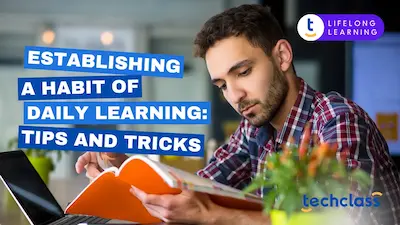
We often think of learning as something that happens through reading, lectures, or formal training. But one of the most powerful, and often overlooked, methods of learning is simply watching others. From childhood through adulthood, observational learning is a subtle yet continuous force shaping our behaviors, skills, and understanding.
Observational learning is the process of acquiring new knowledge or behaviors by watching others and reflecting on the outcomes of their actions. Unlike trial-and-error learning, which relies on direct experience, observational learning allows us to learn by proxy. Whether it's a colleague handling a tense client meeting with grace or a friend mastering a new language through YouTube videos, we often internalize the behaviors and strategies we observe in others.
This kind of learning is intentional when we choose to watch tutorials or mentors, and unconscious when we pick up social cues or habits from people around us. At its core, it’s a highly adaptable tool, suited not just to academic environments but to everyday life and work settings.
Observational learning unfolds in four stages, each playing a vital role in turning passive observation into meaningful understanding:
You can't learn what you don't notice. Paying focused attention to the behavior of others, how they solve problems, communicate, or execute tasks, is the first step. This attention is often drawn to people we admire, share similarities with, or view as competent and successful.
Once we’ve observed a behavior, we need to remember it. Retention involves encoding the behavior into memory, sometimes visually, sometimes verbally. This stage benefits from repetition, reflection, or even taking notes when applicable.
Reproduction is about turning what we've observed into action. Whether it's using new software or delivering a more confident presentation, we draw on memory to replicate the skill. At this stage, practice is key. Even if we can't mimic it perfectly the first time, we can improve with repetition and feedback.
Finally, motivation determines whether we act on what we've learned. Do we believe it's valuable? Do we feel confident enough to try? Are we inspired by the rewards or outcomes we’ve seen others achieve? Without motivation, observed behaviors remain just that, observed.
As adults, we bring a wealth of experience that helps us evaluate what we see and decide how to apply it. Observational learning is especially relevant for lifelong learners because:
In the workplace, for example, you might observe how a respected colleague runs a meeting, handles feedback, or delegates tasks effectively. Outside of work, you might watch someone manage stress, approach conflict, or set healthy boundaries, insights that are equally valuable for personal development.
Mindfulness, the practice of being fully present, can amplify the benefits of observational learning. When we observe with intentional awareness, we notice not just what others are doing, but how and why they do it. This deeper understanding improves retention and helps us discern which behaviors align with our own values and goals.
Mindfulness also sharpens focus, making it easier to pay attention to the details that matter. Whether you're observing body language in a negotiation or emotional tone during conflict resolution, being mentally present allows you to absorb the full picture.
Not all models are equally useful. People tend to learn best by observing people who are:
Choosing the right role models, people who reflect the qualities you aspire to, can fast-track your growth. These might be coworkers, community leaders, or even public figures whose values and accomplishments resonate with you.
Let’s explore how learning by observation can tangibly improve different areas of your life:
Watching someone execute a task helps you learn without formal instruction. Think of how much faster you learned to navigate a new app by watching a tutorial rather than reading a manual.
Observing experts helps you capture the nuances of a skill, from timing to tone to technique, critical in fields where small mistakes matter, such as healthcare or finance.
Observational learning supports diverse learning styles. It’s especially valuable for those who struggle with traditional methods, visual learners, neurodiverse individuals, or people with limited access to formal education.
By observing how others respond emotionally in different scenarios, you naturally build empathy. This improves your relationships and helps you navigate complex social dynamics at work and beyond.
When entering a new work environment or culture, observing norms, behaviors, and unspoken rules can help you fit in more smoothly and avoid social missteps.
While observational learning is powerful, it has a flip side. We can also pick up harmful behaviors, especially if they appear rewarding or go unpunished. This is why media literacy and social awareness are essential. Just because a behavior is popular or gets attention doesn't mean it should be imitated.
The goal isn’t to copy everything we see, but to consciously filter and adopt behaviors that serve our growth and well-being.
Observational learning is one of the most accessible, flexible, and impactful learning methods available to us. By watching others with intention and reflection, we can continue growing long after formal schooling ends. Whether it’s learning a new professional skill, adopting healthier habits, or improving emotional resilience, what we observe in others often becomes the blueprint for who we become.
So the next time you find yourself watching someone succeed, pause and ask yourself: What can I learn from this? You might be surprised how much more there is to gain just by paying attention.
.webp)

